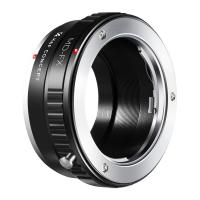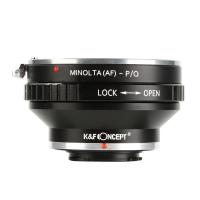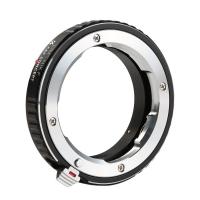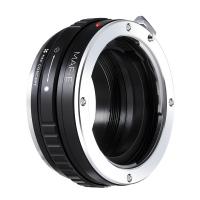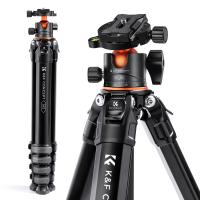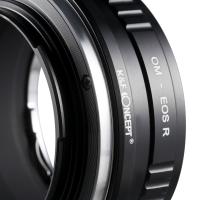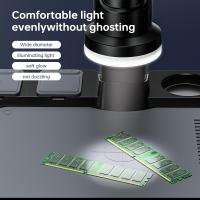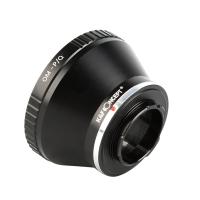How Does A Compound Microscope Magnify An Object ?
A compound microscope magnifies an object by using two lenses - the objective lens and the eyepiece lens. The objective lens is located near the specimen and produces a magnified image of the object. This image is then further magnified by the eyepiece lens, which is located near the viewer's eye. The combination of these two lenses produces a greatly magnified image of the object. The magnification power of a compound microscope is determined by the focal length of the objective lens and the eyepiece lens.
1、 Objective lens magnifies the object.
A compound microscope is an optical instrument that uses two lenses to magnify an object. The two lenses are the objective lens and the eyepiece lens. The objective lens is located near the object being viewed and is responsible for magnifying the object. The eyepiece lens is located near the viewer's eye and is responsible for further magnifying the image produced by the objective lens.
The objective lens magnifies the object by bending the light that passes through it. The amount of bending that occurs depends on the shape of the lens and the refractive index of the material it is made of. The objective lens is designed to have a short focal length, which means that it can focus light from a nearby object onto a small area of the microscope's stage.
The magnification of the objective lens is determined by its focal length and the distance between the lens and the object being viewed. The closer the lens is to the object, the greater the magnification. The objective lens can be adjusted to change the distance between the lens and the object, which allows for different levels of magnification.
In addition to the objective lens, the quality of the microscope's optics and the illumination of the object being viewed also play a role in the magnification of the object. Modern compound microscopes often use advanced optics and illumination techniques to produce high-quality images with high levels of magnification.
In summary, the objective lens of a compound microscope magnifies the object by bending the light that passes through it and focusing it onto a small area of the microscope's stage. The magnification is determined by the lens's focal length and the distance between the lens and the object being viewed.

2、 Eyepiece lens further magnifies the image.
A compound microscope is an optical instrument that uses two lenses to magnify an object. The objective lens is located near the specimen and produces a real, inverted image. The eyepiece lens is located near the observer's eye and further magnifies the image produced by the objective lens. The combination of these two lenses produces a highly magnified image of the specimen.
The objective lens is the primary magnifying lens in a compound microscope. It is a high-powered lens that is designed to produce a real, inverted image of the specimen. The objective lens is located close to the specimen and collects light from it. The light is then focused by the lens to produce a magnified image of the specimen.
The eyepiece lens is the secondary magnifying lens in a compound microscope. It is located near the observer's eye and further magnifies the image produced by the objective lens. The eyepiece lens is designed to produce a virtual image of the specimen that appears larger than the actual specimen.
The magnification of a compound microscope is determined by the combination of the objective lens and the eyepiece lens. The total magnification is calculated by multiplying the magnification of the objective lens by the magnification of the eyepiece lens. For example, if the objective lens has a magnification of 10x and the eyepiece lens has a magnification of 20x, the total magnification of the microscope is 200x.
In recent years, advancements in technology have led to the development of digital microscopes. These microscopes use digital cameras to capture images of the specimen and display them on a computer screen. Digital microscopes offer several advantages over traditional compound microscopes, including the ability to capture and store images, and the ability to share images with others remotely. However, the basic principles of magnification remain the same, with the objective lens collecting light from the specimen and the eyepiece lens further magnifying the image.

3、 Total magnification is the product of both lenses.
A compound microscope is an optical instrument that uses two lenses to magnify an object. The lenses are the objective lens and the eyepiece lens. The objective lens is located near the object being viewed and produces a real, inverted image of the object. The eyepiece lens is located near the viewer's eye and magnifies the image produced by the objective lens.
The magnification of a compound microscope is determined by the focal lengths of the objective and eyepiece lenses. The magnification of the objective lens is fixed and is usually printed on the lens. The magnification of the eyepiece lens can be adjusted by changing the distance between the lens and the viewer's eye.
The total magnification of a compound microscope is the product of both lenses. For example, if the objective lens has a magnification of 10x and the eyepiece lens has a magnification of 20x, the total magnification would be 200x (10 x 20 = 200).
The compound microscope has revolutionized the field of biology and has allowed scientists to study the microscopic world in great detail. With the advancement of technology, modern compound microscopes are equipped with digital cameras and software that allow for image capture and analysis. This has led to new discoveries and a better understanding of the microscopic world.
In conclusion, the compound microscope magnifies an object by using two lenses, the objective lens and the eyepiece lens. The total magnification is the product of both lenses. The compound microscope has played a crucial role in scientific research and continues to be an important tool in the field of biology.

4、 Resolution is limited by wavelength of light.
A compound microscope magnifies an object by using two lenses, the objective lens and the eyepiece lens. The objective lens is located near the object being viewed and produces a magnified image of the object. This image is then further magnified by the eyepiece lens, which is located near the viewer's eye. The combination of these two lenses produces a greatly magnified image of the object.
The magnification power of a compound microscope is determined by the focal length of the objective lens and the eyepiece lens. The greater the focal length of these lenses, the greater the magnification power of the microscope.
However, it is important to note that the resolution of a compound microscope is limited by the wavelength of light. This means that the microscope can only distinguish objects that are a certain distance apart. If two objects are too close together, they will appear as a single object under the microscope.
Recent advancements in microscopy, such as super-resolution microscopy, have allowed for improved resolution beyond the limits of traditional microscopy. These techniques use various methods to overcome the diffraction limit of light, allowing for the visualization of structures and details that were previously impossible to see.
In conclusion, a compound microscope magnifies an object by using two lenses, the objective lens and the eyepiece lens. The magnification power of the microscope is determined by the focal length of these lenses. However, the resolution of the microscope is limited by the wavelength of light, although recent advancements in microscopy have allowed for improved resolution beyond the limits of traditional microscopy.





















